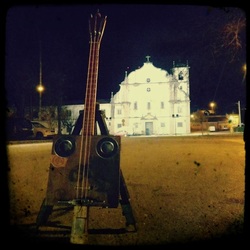
Well, technically it's not a cigar-box guitar because the (new) box was made for 3 small sample bottles of booze, Port to be precise. The name Amália has everything to do with a Portuguese Fado-guitar being the inspiration for this build.
Amália Rodrigues (born July 23rd 1920 in Lisbon) was a Portuguese singer and actress. Known as the Rainha do Fado ("Queen of Fado"), Rodrigues helped popularize fado worldwide and traveled internationally between the 1950's and 1970's. She also became one of the most important figures in the genre's development, becoming the eminent female fadista during a 50-year recording and stage career. Amália, who was born into an almost destitute family and who grew to become not only Portugal's major star but also an internationally acclaimed artist and singer, whose career spanned 55 years, recording songs in several languages, versions of her own songs, most famously "Coimbra" (April In Portugal) and performing all over the world. Her personality and charisma, her beauty and her extraordinary timbre of voice gave depth and intense life to her singing: the impression she made on the public, her immediacy and the natural way she empathized with her public were tremendous and attracted more and more admirers throughout the world. By the time of her death in 1999, Amália had received more than 40 decorations and honors from all over the world. Most importantly Amália put fado as a musical genre on the map of world music, in dictionaries, libraries and musical essays. She paved the way for the generations that would follow, and that continue her legacy.
The neck of the CBG is made out of an ax-handle,the fret-board and the head-stock out of a piece of some reclaimed Brazilian hardwood that used to lay on the floor at a Portuguese mansion. The frets are just steel nails and the tuning pegs are 4 mm threaded rod with little aluminium blocks that came of a front-door security rack. The nut and bridge just a few old bolts. The hand-rest came from a drawer of an 1930's Art-Deco cabinet and the sound-hole covers are 80 ct's kitchen-sink strainers. The string cover on the back came from a suitcase handle. The only real guitar part are the strings, which are re-used once that weren't broken on one of the Bluesbarn Studio guitar's. The picture of Amália was contact printed on the wood, other detail are glued on and the whole body was stained with "Nilzone" and covered with a few coats of "Glitsa" varnish.
0 Comments
|
The Creative CoupleThey are living in a 200 year old cottage on a lonely hill in the rural heart of Portugal. Next to working on the Triple Chaos creative instruments in the "Not Just Sawdust" woodwork and recycling workshop, they're running the Bluesbarn Studio, make video's, write poems and books, paint, build marionettes and other puppets, love, welcome guests, and enjoy life their way. Categories
All
Archives
May 2018
|

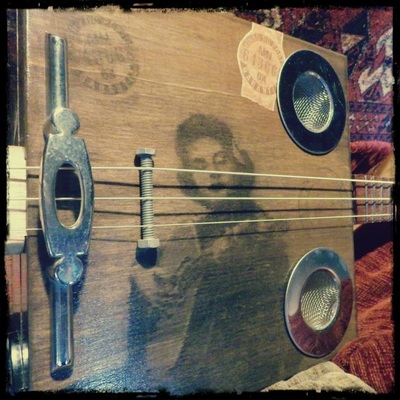
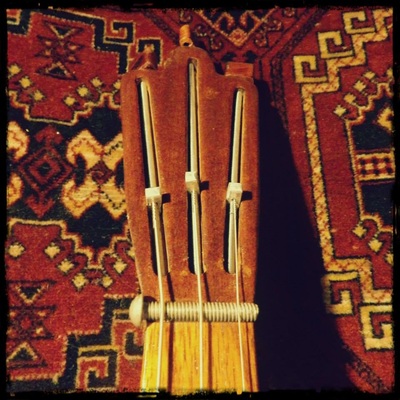
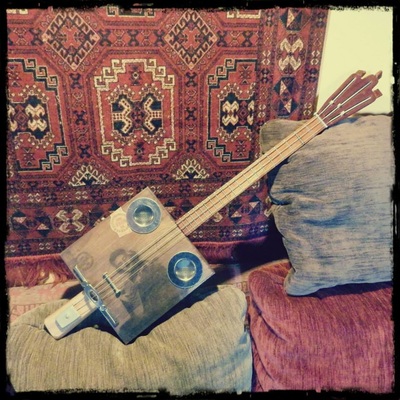
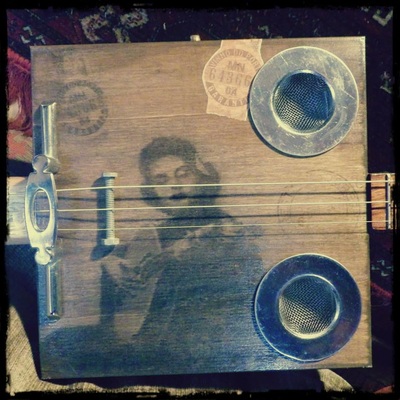
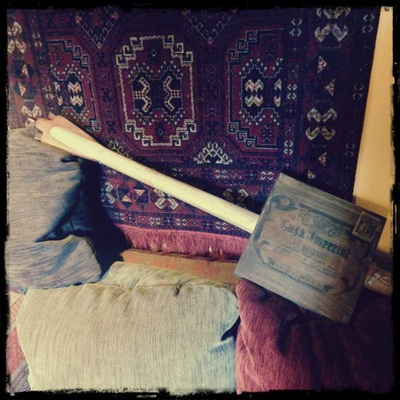
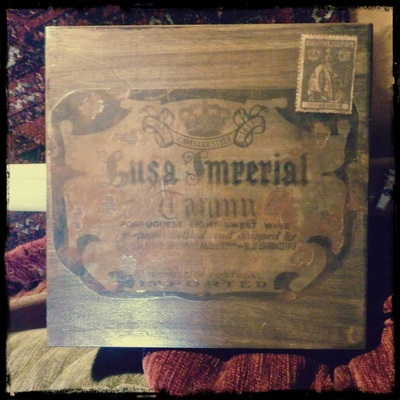
 RSS Feed
RSS Feed
